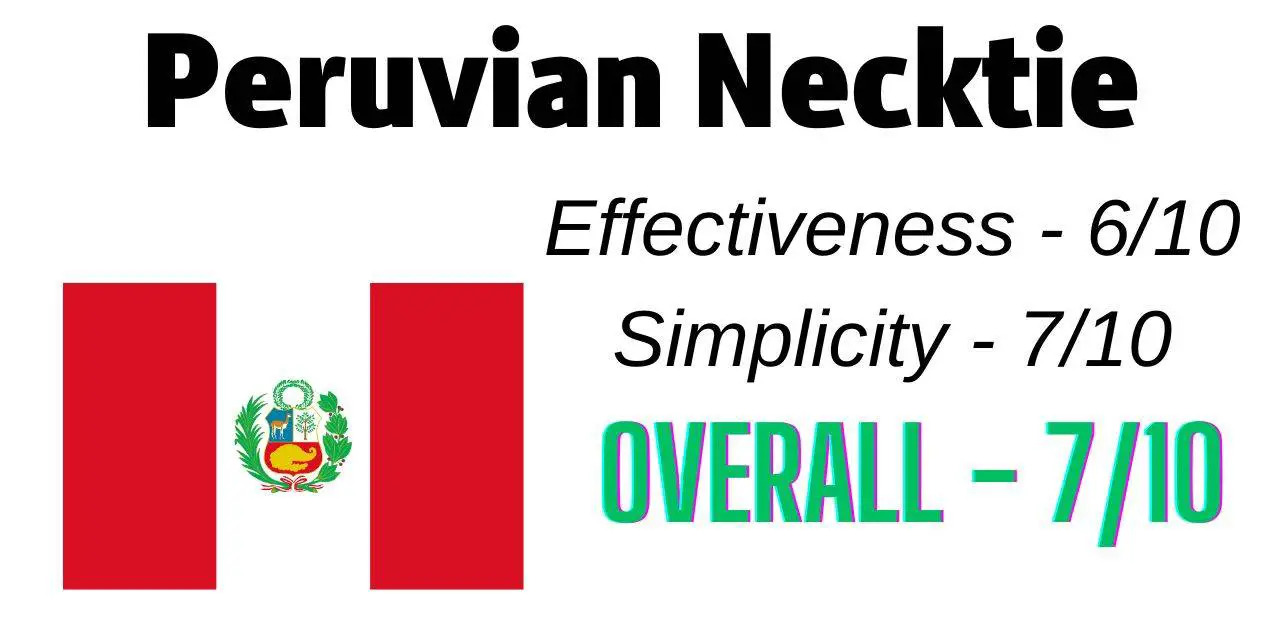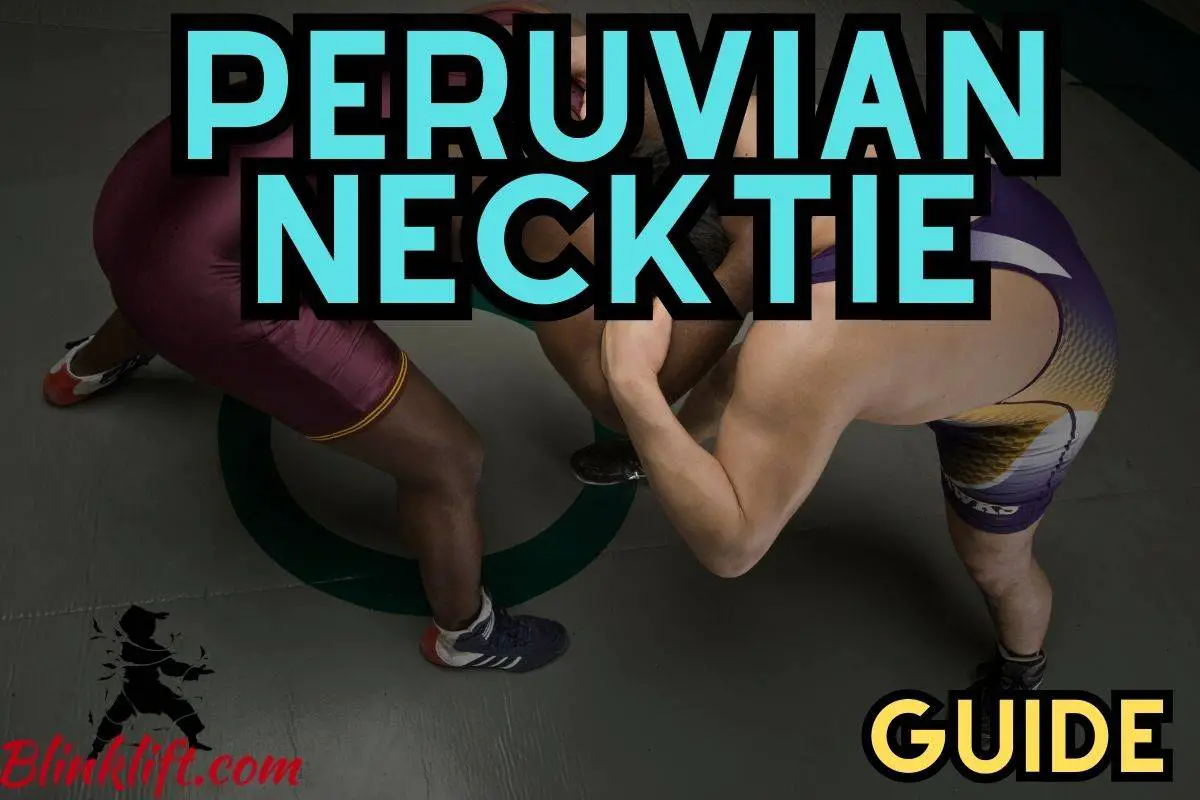So you want to learn to use the Peruvian Necktie. Fantastic. This choke is going to be an exceptionally effective addition to your toolbox. Therefore, learning it—will definitely be worth it.
This article is a complete guide to performing the Peruvian Necktie properly. It’ll also go into further detail regarding this choke, such as its origin and whether it’s legal to use in various grappling-based martial arts.
I encourage you to read the entire piece without skipping any section. By skipping one part, you might miss valuable information you want to know to boost your Peruvian Necktie skills. But you can skip the second part of this article if its origin doesn’t interest you.
One last point before diving in. Mat experience is much more valuable than reading any book or watching any video. You want to start getting comfortable with getting on the mat and experimenting. That’s the best way you’ll be able to see both short and long-term improvement.
So without further ado, let’s dive into the 1st part of this article!

What Is the Peruvian Necktie?
Alright. So this first part of the article will review what the Peruvian Necktie is. It’ll also review which martial arts teach it and why it’s so effective. So what is it?
The Peruvian Necktie is a choke that’s taught in many grappling-based martial arts, such as BJJ, MMA, and wrestling. You want to start in the front headlock position to perform it. It’s a choke that utilizes 4 of your limbs, making it much more powerful.
Because it uses all your limbs, you don’t need any upper body strength to execute it properly. You’ll be using your hamstrings to push the opponent’s head down into your forearm, forcing the opponent to tap out.
You can execute the Peruvian Necktie in a few ways. However, I’ll present two of my favorites in this article. We’ll be covering them in the 3rd section, so stay tuned for that.
Until then, know that, unlike most chokes, the Peruvian Necktie utilizes both your legs and arms to choke the opponent out. That’s why you can generate tons of choking power and force the opponent to tap out quicker than you think.
The Origin of the Peruvian Necktie
Why is the Peruvian Necktie named the way it is? There’s a straightforward answer to that. You can probably guess what it is. But if you don’t, here’s where its name came from.
The Peruvian Necktie was constructed by a Peruvian UFC fighter, named Tony DeSouza. He invented it when he was working under a BJJ black belt, named Andre Pederneiras. Tony DeSouza was a fantastic grappler when he competed.
He was an innovative and competent grappler who contributed to the world of BJJ by inventing and constructing the Peruvian Necktie.
Today, while it’s not as popular as other submissions and chokes, such as Triangle and Guillotine Choke, it’s widely used in MMA, BJJ, and wrestling.
This is how this choke came to life. Watch the video above to hear more about the wonderful and interesting story of Tony DeSouza.
How to Perform the Peruvian Necktie
This part of the article will be about the juicy, practical stuff we’ve all waited for. If you want to start choking your opponents out using this Necktie, this is the most critical part for you to read and understand.
So without further ado, let’s see how you perform the Peruvian Necktie properly:
- Start in the front headlock position
- Sprawl to free your leg
- Trap the opponent’s head and arm with a Gable Grip
- Lean back
- Lean on your side
- Place one of your legs over the opponent’s back
- Extend your other leg
- Create contrary pressure with your leg and forearm
- Wait for the tap
So let’s break it down.
The first step here is to start in the front headlock position. This position is primarily used in wrestling, although you can use it in BJJ as well. The next step is to sprawl and free your leg.
And now for the most important part of the execution: you slide your right arm underneath the opponent’s armpit. Then, you slide your other arm from the other side and lock a Gable Grip. The key point is to trap the opponent’s neck and arm, like the Triangle Choke.
Once you lean back and onto your side, you want to place your left leg on the opponent’s back, so your hamstrings will be on the opponent’s head. The last step is to extend your right leg while squeezing your forearm to your hamstring. This will cause immense pressure.
Here’s a visual aid:
Is the Peruvian Necktie Legal in BJJ?
BJJ is a martial art that teaches ground grappling. Naturally, it also teaches many submissions and chokes, which are extremely effective. Some of the chokes being taught in the self-defense world, however, are illegal. Let’s examine whether a choke that was constructed by Tony DeSouza is legal to use in BJJ.
The Peruvian Necktie is legal to use in BJJ, as both chokes and neck cranks are permitted. That said, it’s banned in other grappling-based martial arts, such as Judo, for the IJF believes it poses too much danger to be widely used in tournaments.
The following video showcases two BJJ coaches that showcase this choke. It’s widely used in it and considered to be very effective. Thus, if you want to boost your grappling skills, you better learn it as soon as possible!
How to Defend the Peruvian Necktie
You can defend and escape the Peruvian Necktie in several ways. However, there’s one that seems to have the highest success chances, as it’s reliable.
This defense move relies on you preventing one thing from happening. That thing is the opponent placing his leg on top of your back. You should already know that it’s one of the fundamental steps to this Necktie. Therefore, you want to prevent that from happening. Here’s how you can do it.
You want to prevent your opponent from placing your leg on your back to defend the Peruvian Necktie. The best way to do that is by sliding your elbow back once the opponent leans back and tries to place his foot on your back. Finally, you sweep your arm out and attain the top position.
So yea, you want to slide your elbow back. Which elbow? The one that’s on the same side of the opponent’s leg that he desires to place on your back.
Try this defensive move for yourself. See how it plays out. Experiment with it to see whether you like it or not. And if you do, adapt it to your grappling game.
Is the Peruvian Necktie a Choke or a Neck Crank?
In some instances, neck cranks are illegal to use, especially in official tournaments. However, such as in the instance of BJJ and UFC, they’re legal to use. The point is that we want to know whether a submission we learn is a choke or a neck crank.
The Peruvian Necktie is considered a choke. Sometimes, however, the angle it utilizes will cause a neck crank, which you want to watch out for. As a result, it’ll be worth it to experiment with this Necktie to get comfortable with using it as a choke and not a neck crank.
You want to pay attention to neck cranks, especially when they’re accidental. When you apply any neck pressure on your opponent’s neck, release all pressure when he taps out. Pay extra attention when you apply neck pressure.
Final Words
This has been the Peruvian Necktie. This submission is one of BJJ’s and other martial arts’ most effective chokes. You can use it to force your opponent to tap out extremely quickly, especially if you perform it correctly.
So, what’s next for you? Your next step should be to get on the mat and gain some real experience using this Necktie. You’ll be able to learn more with 10 minutes of training than 1 hour of video watching and article reading. Get on the mat!
You can also sign up for our Email Newsletter to keep up with our blog posts and gain access to free martial arts/self-improvement courses!
Here are other articles you’d enjoy reading:
Chilean Necktie 101 – A Mighty Choke
German Necktie 101 – BJJ Technique Breakdown
BJJ 101 – Nelson Necktie (How to Perform Flawlessly)

